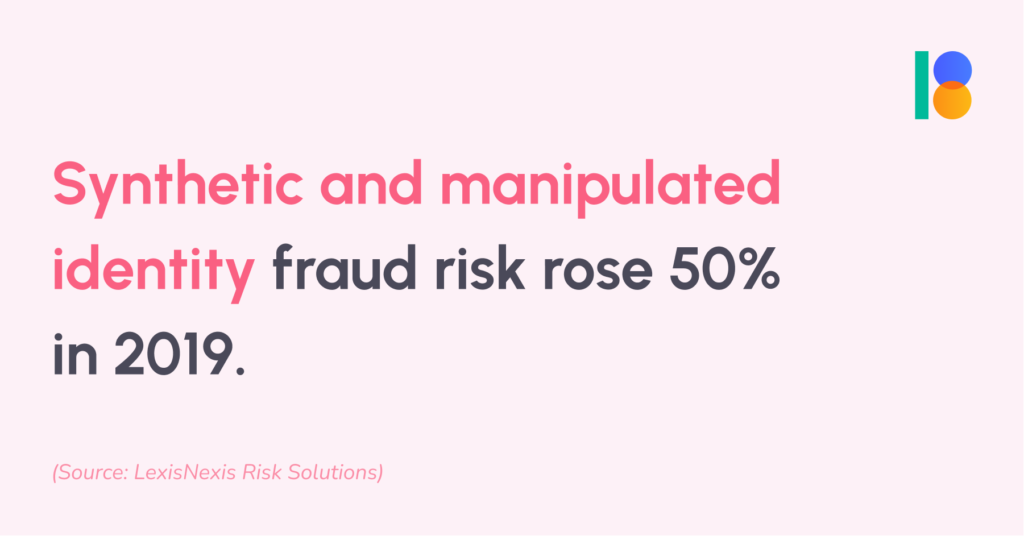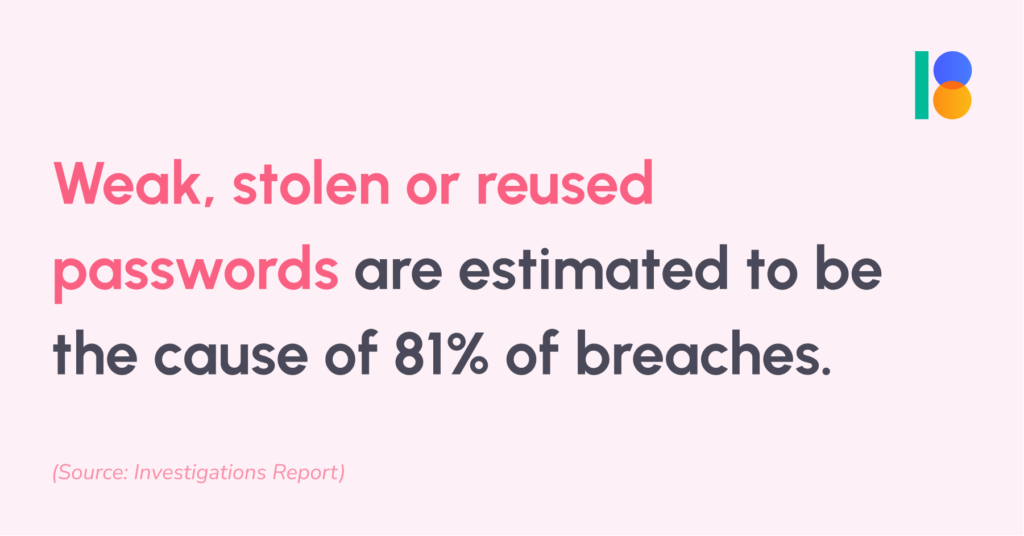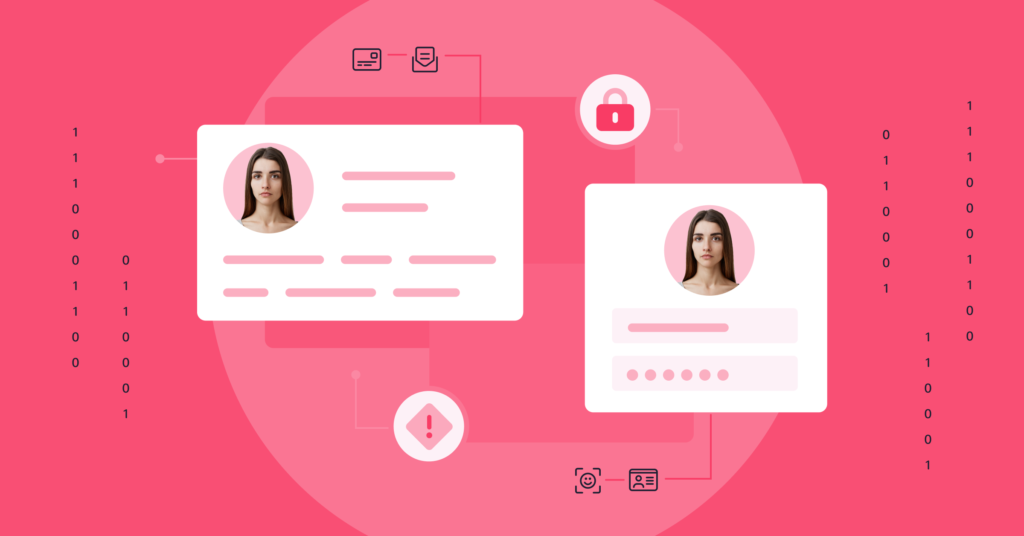Today digital identity is harder and harder to trust and protect. Organizations trust that their customers are who they say they are, while customers trust organizations in protecting their information and deliver them quick and easy access to their service.
However, identity fraud is growing at a concerning pace, breaking online trust, and shattering the digital identity.

What is identity fraud?
Identity fraud is the illegal use of someone’s personal data to commit fraud or illegally deceive someone. It can take various forms and is growing as fast as technologies are evolving. Fraudsters are taking their job seriously and have normal job schedules, as the Global Fraud Index 2019 reports fraudsters to be working from 9-17.
Chances are that you were already exposed to one form of identity theft/fraud in the past. Below are just some of the ways fraudsters use to deceive people, steal their personal information and identity.
- Malware – downloading tempting “free software” that actually hide malware/malicious software which gives fraudsters access to your computer.
- Phishing – a message or email crafted to look exactly like a trusted organization asking for you do click on attachments or to log in with your personal information
- Data breach – confidential information is accessed, stolen or used without authorization
- Deep fake – digital image tampering tools that create videos of sounds that look and sound exactly like the real person.
- SIM swaps – Someone contacts your telecommunications provider and by using your stolen personal information, they convince them that they are you. They will ask to transfer your phone number to another SIM card and they will have access to all your accounts associated with your phone number.
- Synthetic identity – a new identity is created by combining a real person’s data with fake information.


Why current solutions are not effective anymore?
Several solutions have been developed in an attempt to fight and prevent identity fraud. One time password (OTP), Knowledge-based questions (KBA), two-factor authentication (2FA) with KBA, or security tokens. However, these solutions are not fraud-proof, as passwords are easy to hack, answers to KBAs are easily found on social networks and mobile devices are stolen, lost or broken.


Traditional identity verification solutions don’t offer complete protection making businesses vulnerable not only to fraud but to other threats as well.
1. Cost threats: penalties and revenue reduction
Traditional identity verification methods are costly for how vulnerable they are to fraud. They expose your business to fraud damage and to financial penalties for not complying with KYC and AML regulations.
2. Experience threats: friction and low customers trust
The balance between protecting your business from fraud and delivering a friction-free experience can be difficult. If the user experience is too long, complicated, and inconvenient, users will abandon the onboarding process and will look for a similar service. More than this, users are very likely to lose trust in your service if they feel their data is not secure.
3. Scaling threats: growth is affected by rejecting genuine users
Trying to combat fraud, you can take too hard a line and as a consequence, many genuine users will be rejected in accessing your service/product. When your business is looking to expand, different regulations and criteria when it comes to identity checks will make it necessary to bring specialists to your teams, driving up the operational costs.
Professionalized fraud is making traditional identity verification solutions not reliable anymore. The new advanced fraud techniques adopted worldwide with higher levels of operations throughout the week are a serious threat to millions of businesses and customers.
How do you really know the user on the other side of the screen is who they say they are?
What are the cutting edge solutions that can keep the balance between security, user experience and regulatory compliance?
Take care, stay informed!
Your friends at Biometrid ✌️


